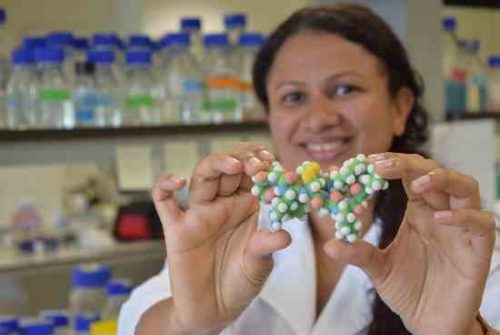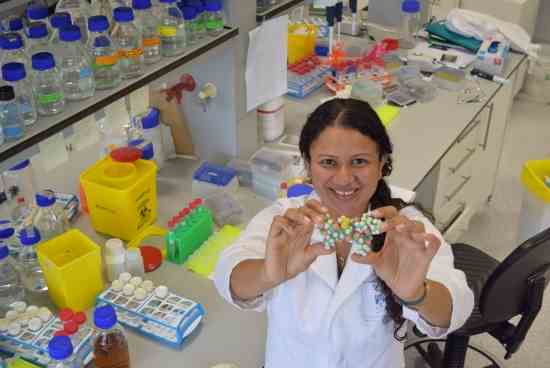Melbourne, March 27: A drug-like protein ring that evolved in sunflowers has been pieced together by Australian and US scientists in a study published in Molecular Biology and Evolution.
Lead author Dr Achala Jayasena, who has just completed her PhD at UWA, said researchers were interested in a small but potent digestion-blocking molecule that has evolved in sunflower seeds called SFTI.
“What makes SFTI unusual is that its sequence is buried inside a completely different protein that acts like a host,” Dr Jayasena said.
Although the evolutionary process took some 45 million years, the researchers are still calling it a shortcut.
““The digestion-blocking SFTI took 45 million years to evolve inside its host. The first evolutionary step was a short DNA sequence that makes a tiny circular protein.
“By 34 million years ago the protein had become bigger and flatter”, Dr Jayasena explained.
Given the current health and digestive issues stemming from both plant-based proteins and animal-based proteins, the study may go a long way to identify effective digestive measures for the human body.
“The way this protein evolved inside another protein host has us wondering if this shortcut is a universal phenomenon shared by plants, fungi, animals and bacteria. If so there will be other examples out there waiting to be discovered.
“That these peptides are stable and bioactive has us hoping that other examples will similarly make useful molecules”, Dr Jayasena said.
The study team included researchers from The University of Western Australia; La Trobe University in Melbourne, the University of Tennessee and the University of Texas.
Team leader Dr Joshua Mylne, principal investigator with UWA’s School of Molecular Sciences said the team used an unprecedented volume of DNA sequence information to document the evolution of an unusual family of plant proteins.

Dr Jayasena further explained that by “sequencing all the genes in seeds from over 110 species related to sunflower we were able to classify different gene types that make SFTI or related products.
“Coupling this to information from evolutionary trees made by our collaborators in the US allowed us to date when certain gene types appeared”.
Apparently, about “23 million years ago some of these bigger and flatter proteins were able to block digestive enzymes” and present day species of some flowers including the common sunflower, have retained that property.
Now what happens if digestive enzymes are blocked by these hitherto hidden proteins?
We eat food, but our digestive system doesn’t absorb food, it absorbs nutrients.
Digestive enzymes, primarily produced in the pancreas and small intestine, break down our food into nutrients so that our bodies can absorb them – like amino acids from proteins; fatty acids and cholesterol from fats; simple sugars from carbohydrates; and vitamins, minerals, and a variety of other plant and animal compounds.
Now if we don’t have enough digestive enzymes, we can’t break down our food — which means even though we may eating well, we won’t be able to absorb the good nutrition.
“What we’ve done is document the evolutionary steps that this small protein ring underwent to reach its current day form and function”, which could be the first step to block and discourage all digestive issues for the human body.
“This is the first time anyone has been able to document how a protein can appear stepwise inside an unrelated protein host. Although it took some time, making a new protein inside an existing gene is an evolutionary shortcut,” Dr Jayasena said excitedly.
The study ‘Stepwise evolution of a buried inhibitor peptide over 45 million years’ was supported by the Australian Research Council.
Shalini Singh
Similar Posts by The Author:
- Diwali 2024 : Celebrate India Inc. brings 19th Fed Square Diwali on October 26
- Racism rears its ugly head during council elections, as Jamel Kaur Singh & others found out
- $400 School Saving Bonus will help busy Victorian families
- Aussie Indian Alexis Dennis opens up on racism in Australia
- Peter Dutton wishes the Indian diaspora

